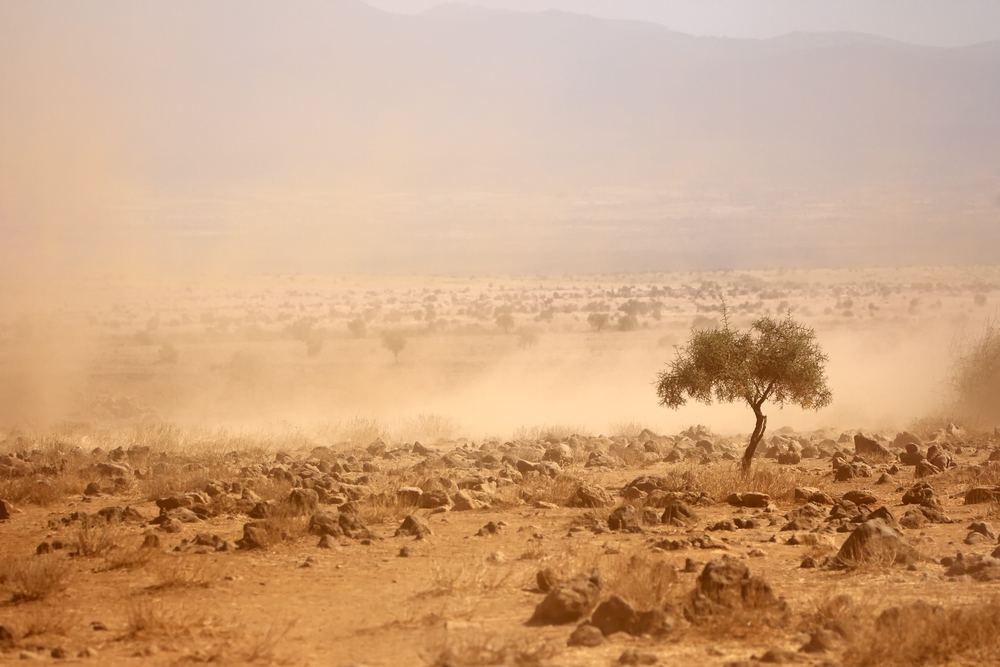Last week I mentioned in one of the daily updates at the End of History how a high ranking official at the United Nations warned we are beginning to see the onset of “pandemic famines.” These are famines brought about by the pandemic’s disruption of food and/or aid to different parts of the world.
The global food system is something I spent one-third of my recent book exploring. There I explained the dysfunctional structure of the global food system, how it was built after World War II, and that we would definitely see a spike in famines in the coming half-century. The COVID19 pandemic has now pushed those predictions into overdrive and quickly shortened the timeline.
Today’s global food system was built to protect power, not to provide long term food needs for a rapidly growing global population. We do not have a supply problem. There is enough food to feed the planet. We have a distribution problem. The joints of the global food distribution system are the places where nations flex and secure geopolitical power. The pandemic disrupted this system that thrived on inequity. It also upset the equilibrium through which emergency aid and relief could flow.
According to the World Food Program, the number of people confronting life-threatening levels of food insecurity will double within the developing world to 265 million by the end of the year. A study published in The Lancet says the number of children under age five whose weight is so far below normal that they face an elevated risk of death and long-term health and development problems will grow by nearly 7 million this year. That is a 14% increase over the same measurement in 2019.
These forecasts represent the first wave of pandemic famines – events of massive human suffering – that government bailouts and stimulus cannot hold back much longer.

The countries hardest hit and first in line to face these rolling crises are those who faced the same danger last year. Ten countries constituted the worst food crises of 2019. They accounted for 66% of the total global population living in a state of food crisis in 2019 – or 88 million people. South Sudan had 61% of its population in a state of food crisis (or worse) in 2019. Seven other countries saw at least 35% of their populations in a status of food crisis: Sudan, Yemen, Central African Republic, Zimbabwe, Afghanistan, Syrian, and Haiti.
The pandemic lockdowns produced unprecedented economic turmoil, which resulted in a scaling down of trade, production, and consumption. Those in the weakest areas of the global economy will encounter this in the form of food crises before the end of the year. It has already started.
Rising food prices combined with an economic crisis that lowers incomes and purchasing power means starvation where a family lives on $5 a day. A recent survey conducted by the International Committee of the Red Cross in 11 African countries, 85% of the respondents said food was available in their local markets. But 94% reported prices had increased, and 82% said incomes were down.
Much of Eastern Africa also faced the locust plagues at the beginning of 2020, which devastated their local crops and agriculture. Local production was suffering even before the global pandemic.

Nations that rely on imports to meet their food supply needs may be in even worse shape. A country like Haiti relies on food imports for 50% of its food needs. As a result of the economic lockdowns, those imports came to a halt this spring. Food prices in Haiti are now 77% higher than the rest of Central America and the Caribbean.
Humanitarian and aid organizations say they are witnessing a significant downturn in funds and assistance to meet their 2020 goals. These organizations established such goals before the crisis hit. The problems and needs are growing worse, but the aid and assistance are shrinking.
The global system is transitioning to a new era, and rolling waves of converging crises are the new normal we are approaching.
Additional Reading:
The Other Way COVID Will Kill: Hunger (New York Times)
COVID19 Will Double Number of People Facing Food Crisis (World Food Program)
Global Report on Food Crises (World Food Program)



